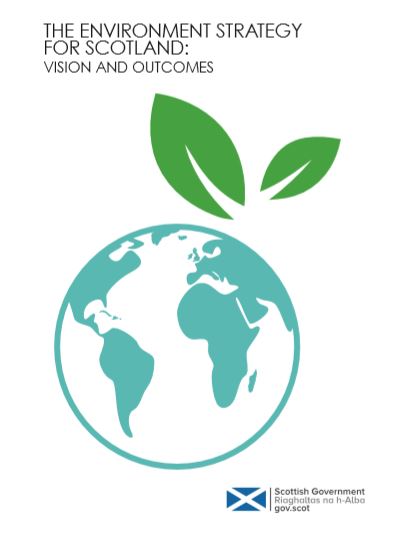The Scottish Government this week published The Environment Strategy for Scotland[i], which Fidra contributed to in its development and now welcomes its publication.
In particular we welcome the acknowledgement that there is a need to ‘ensure that our policy and regulatory framework is robust’, that Scotland ‘must play its full part in tackling the twin global crises of climate and nature’ and ‘will seek to maintain or exceed EU environmental standards’.
In order to achieve these and its overall vision, the Scottish Government aims to deliver the following six outcomes as outlined in the Environment Strategy:
- ‘Scotland’s nature is protected and restored with flourishing biodiversity and clean and healthy air, water, sea and soils;
- We play our full role in tackling the global climate emergency and limiting temperature rise to 1.5°C;
- We use and re-use resources wisely and have ended the throw-away culture:
- Our thriving, sustainable economy conserves and grows our natural assets;
- Our healthy environment supports a fairer, healthier, more inclusive society;
- We are responsible global citizens with a sustainable international footprint.’
Time for targets
Fidra applaud the commitment of the first three out comes to protect and restore Scotland’s nature, end Scotland’s contribution to climate change with net zero greenhouse gas emissions by 2045, and embed circular economy throughout Scotland to end the throw-away culture.
To be truly effective, the delivery of this commitment will require legally binding targets for nature recovery and a detailed action plan for delivery. Fidra would recommend that Scottish Government develop and implement measurable targets for environmental issues such as chemical pollution, waste and plastic pollution. Scottish legislation needs to outline the steps needed across a range of interconnected environmental issues to limit global temperature rise (as indicated in the Government’s CO2 targets), reduce unnecessary chemical use, drive management of waste up the waste hierarchy, and increase resource efficiency.
We equally welcome the remaining three outcomes to conserve and increase the quality of Scotland’s natural assets, ensure access across society to a healthy natural environment, and be responsible for a sustainable global footprint of consumption and production.
Monitoring to prevent pollution
To achieve these outcomes not only requires the monitoring of known substances of concern, but also emerging contaminants like pharmaceuticals, microplastics, and new versions of chemicals such as flame retardants and other persistent organic pollutants (such as per or poly fluorinated alkyl substances, PFAS). We need to take into account the chemical footprint of our consumption to ensure we are not leaving a legacy of chemical contamination around the world.
Oversight and enforcement
A new environment watchdog to oversee compliance with environmental law will be an essential part of achieving these outcomes, and must be a truly independent body with sufficient powers to protect Scotland’s natural resources. This should include adequate resources and ability to investigate complaints from the public, charities and businesses, and impose sanctions when standards are breached.
Fidra welcomes the Environment Strategy for Scotland and looks forward to further details of how these ambitions will be realised using targets, regulations, governance, monitoring and enforcement. Find out more about how Fidra’s work supports Scotland’s environment, and beyond, by exploring our projects.
[i] https://www.gov.scot/binaries/content/documents/govscot/publications/strategy-plan/2020/02/environment-strategy-scotland-vision-outcomes/documents/environment-strategy-scotland-vision-outcomes/environment-strategy-scotland-vision-outcomes/govscot%3Adocument/environment-strategy-scotland-vision-outcomes.pdf
Tags: chemicals, circular economy, climate change, environment, microplastics, pollution, Scotland, Scottish Government

